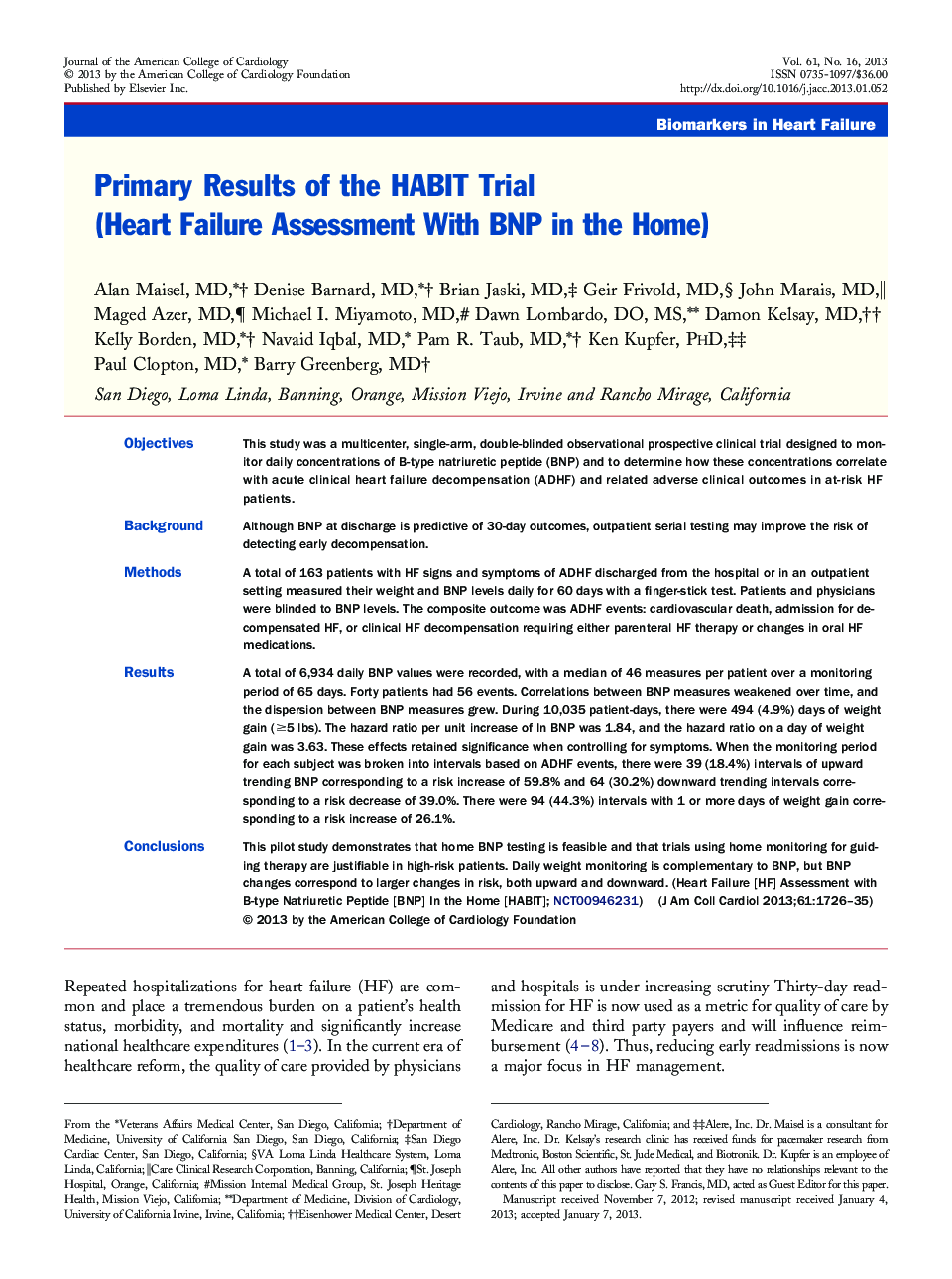| کد مقاله | کد نشریه | سال انتشار | مقاله انگلیسی | نسخه تمام متن |
|---|---|---|---|---|
| 2945862 | 1577162 | 2013 | 10 صفحه PDF | دانلود رایگان |

ObjectivesThis study was a multicenter, single-arm, double-blinded observational prospective clinical trial designed to monitor daily concentrations of B-type natriuretic peptide (BNP) and to determine how these concentrations correlate with acute clinical heart failure decompensation (ADHF) and related adverse clinical outcomes in at-risk HF patients.BackgroundAlthough BNP at discharge is predictive of 30-day outcomes, outpatient serial testing may improve the risk of detecting early decompensation.MethodsA total of 163 patients with HF signs and symptoms of ADHF discharged from the hospital or in an outpatient setting measured their weight and BNP levels daily for 60 days with a finger-stick test. Patients and physicians were blinded to BNP levels. The composite outcome was ADHF events: cardiovascular death, admission for decompensated HF, or clinical HF decompensation requiring either parenteral HF therapy or changes in oral HF medications.ResultsA total of 6,934 daily BNP values were recorded, with a median of 46 measures per patient over a monitoring period of 65 days. Forty patients had 56 events. Correlations between BNP measures weakened over time, and the dispersion between BNP measures grew. During 10,035 patient-days, there were 494 (4.9%) days of weight gain (≥5 lbs). The hazard ratio per unit increase of ln BNP was 1.84, and the hazard ratio on a day of weight gain was 3.63. These effects retained significance when controlling for symptoms. When the monitoring period for each subject was broken into intervals based on ADHF events, there were 39 (18.4%) intervals of upward trending BNP corresponding to a risk increase of 59.8% and 64 (30.2%) downward trending intervals corresponding to a risk decrease of 39.0%. There were 94 (44.3%) intervals with 1 or more days of weight gain corresponding to a risk increase of 26.1%.ConclusionsThis pilot study demonstrates that home BNP testing is feasible and that trials using home monitoring for guiding therapy are justifiable in high-risk patients. Daily weight monitoring is complementary to BNP, but BNP changes correspond to larger changes in risk, both upward and downward. (Heart Failure [HF] Assessment with B-type Natriuretic Peptide [BNP] In the Home [HABIT]; NCT00946231)
Journal: Journal of the American College of Cardiology - Volume 61, Issue 16, 23 April 2013, Pages 1726–1735